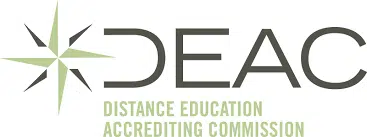How Can I Teach English Abroad Without Speaking The Local Language?
Join a global community of over 200,000 TEFL teachers working throughout the world! Enrol me!
People have a lot of questions about teaching English as a Foreign Language. In fact, there are a few questions we get asked again and again. And again. A few of the top questions are
How much money can I earn teaching English online?
Where is the best place to learn English?
What do I need to teach English online?
and
Do I need to know the language to teach English as a foreign language?
In other words, if I’m teaching French students, do I need to be fluent in French to be their English teacher?
This is a very common misconception that we would like to bust right now. As a teacher of English as a foreign language, you only need to be able to speak one language: English.
Many people believe that teachers need to be able to speak the first language of their students in order to teach them English. Besides the fact that there are not that many people who are highly fluent in more than one language besides English, this would be especially difficult when teaching English as a Foreign Language simply because throughout your career you will teach students from all over the world who speak many different languages.
Even if you can speak Spanish, this won’t be very helpful when teaching English in China or Saudi Arabia, or when you teach a class of Germans, Brazilians and Libyans.
So not only is it unlikely that you’ll be able to use your students’ language to teach them English, but it would also be to a degree ineffective. In fact, theories of language learning point to the efficiency of learning a language through immersion.
It doesn’t matter if your students are Turkish or Spanish or Thai. It doesn’t matter if you are teaching English in South Africa or China or Mexico. And it certainly doesn’t matter if your students are Advanced learners of Intermediate learners or Beginner learners. What matters is that you speak English. This is the basis of immersion learning, and this is the foundation of teaching English as a Foreign Language.
Read more: 7 More FAQs about Teaching English as a Foreign Language
What is immersion learning?
Immersion learning is when students are taught a language using only that language.
It is also used to teach other subjects in a second or foreign language. For example, immersion learning is when English-speaking students are taught French but the teacher teaches them using only French, or when Spanish-speaking students are taught Geography in English.
You might be wondering how on earth that’s possible, but immersion learning has proven to be a very effective teaching method.
First of all, you must realise that this is not a sink-or-swim approach.
The teacher does not teach as they would in a classroom where the students speak the same language as the teacher. The teacher grades their language so that it is clearer and more understandable for the students. Teachers make use of hand gestures, body language, props, visual aids, and realia much more than in other classrooms. And teachers incorporate an element of language focus into the lesson, even if the language is not the focus of the lesson.
In other words, the teacher will define the aim of the lesson and then plan a lesson around that in order to achieve that aim. In a TEFL classroom, this aim is a linguistic aim. The teacher plans activities that will help the learner understand the meaning and use of the target language. They build on their current language knowledge and they will relate the new language to their own language use. Finally, they utilise the language in a natural and relevant context. This is all accomplished only through the use of English.
The benefits of immersion learning
Let’s look at an illustration of how successful immersion learning can be.
Did you take foreign language lessons in high school or university? Usually, these lessons do not follow the same principles as TEFL and are often taught through grammar-translation methods. Even if you took those lessons for five years, would you be able to go to that country and comfortably speak to people on the street in their language? Probably not.
Then consider our students learning English as a foreign language.
The whole point of our lessons is for our students to be able to communicate as soon as they walk out of the classroom. They learn the language which is useful to them and they are taught in a way that encourages the use of the language in a real situation from the get-go. Even students who have had a few lessons in a TEFL classroom are able to use what they have learned.
Immersion learning provides an opportunity for learners to be exposed to natural language, rather than only textbook language. They are more likely to encounter natural language, slang, and colloquialisms in the classroom, which will help them understand the language they hear outside the classroom. Immersion learning focuses on real language and everyday situations. In fact, immersion learning mirrors the way we naturally learn our first language – and we all manage to learn that pretty easily!
Read more: Authenticity in the EFL Classroom

The success of immersion learning
Immersion learning introduces the culture of the language to the student. The life and experiences of the teacher are part and parcel of an EFL lesson. The teacher will invariably share their stories with the students, and this will lead to bringing elements of their culture into the classroom.
Immersion learning has been shown to be a quicker route to fluency than other methods of learning a foreign language. Immersion learning is intensive and this extended exposure to the target language is the major reason immersion students learn the language more quickly.
Is translation a no-no?
This does not mean that there is no place for translation in our EFL classrooms.
Translation is an effective tool in language learning if it is done appropriately. Translation should not be used as the main method of teaching a language structure. It should not be used as a first resort if a student doesn’t understand. There are plenty of strategies you can use which utilise the target language to aid comprehension or clear up confusion. Translation should only be used to convey very important information or to show a contrast between the two languages.
Read more: Using Translation in the TEFL Classroom
Immersion learning in the EFL classroom
As you can see, immersion learning is the way forward when it comes to learning a foreign language. Let’s look at how you can implement immersion techniques in the classroom on a practical level:
- Use English as much as possible.
- Use translation sparingly – only if absolutely necessary.
- If you do speak the local language, don’t let your students know that you do or they will insist on speaking to you in their first language. If you are a native speaker of the same language as your students or they know you can speak their language, make sure you implement an English-only rule in the classroom.
- In the case that your students are Beginner students, spend some time teaching them classroom language so they will be able to understand your instructions.
- Incorporate authentic texts into your lessons as much as possible.
- Use visual aids, realia, and props.
- Remember to grade your language according to the level of your learners.
- Repeat, repeat, repeat!
Should I learn the local language?
Absolutely yes! But not for the purposes of teaching.
It can be problematic if your students know you can speak their language simply because they will resort to asking you questions in their language. Even if you answer in English you are still depriving them of the opportunity to practise their English by formulating and asking the questions in English.
If you are tired or if a concept is particularly challenging for your students, it can be easy to slip into an explanation in their language. Again, this is not helpful because it is taking away time that could be spent talking and thinking in English.
We want our learners to learn English as naturally as possible. This means we want them to learn to think in English, rather than think in their own language and translate. Ultimately this will slow them down. This is why many classrooms have an “English only” rule. This might actually be at the request of the school rather than the teacher.
On the other hand, learning the local language is a way of understanding and fitting into the culture better. Knowing the local language will not only help you get around more easily, but it will introduce to a world which is not easily accessible to a tourist. Speaking to locals in their language will show them you respect their language and culture and you will learn a lot more simply because you can speak to those who cannot speak English.
Not being able to speak the local language may restrict your friendship circle, too. You will find yourself spending all your time with other English-speakers and not making any friends with locals.
Read more: Culture Shock
Finally, learning another language will help you understand what your students experience in your classroom every lesson. Learning another language is not easy and it can be stressful. Learning another language will remind you of the hard work and dedication it takes to learn a language, and of the importance of motivation. It will help you realise the apprehension when it comes to making mistakes but, at the same time, the necessity of making them.
Learning a foreign language will make you a better teacher, both because you will better understand effective teaching practices and because you will have more empathy for your students.
Read more: How to Get to Grips with the Local Language
If you’re worried about going through the process of finding a job in, say, Thailand if you don’t speak Thai, don’t let that freak you out. There will be a staff member (probably quite a few) at the school who will speak English. They will take you through the interview process and liaise with you. They will be the ones who will help you acclimatize to your new home when you get there. In other words, there shouldn’t be a work-related situation where you are stuck because you don’t speak the language.
So in a nutshell, you most definitely don’t need to know a foreign language to teach English as a Foreign Language. Learning the local language will help you be a better teacher and fit into the culture better, but it is by no means necessary to be an EFL teacher.
Accreditation Partners
The TEFL Academy was the world’s first TEFL course provider to receive official recognition from government regulated awarding bodies in both the USA and UK. This means when you graduate you’ll hold a globally recognised Level 3 (120hr) Certificate or Level 5 (168hr) Diploma, meaning you can find work anywhere and apply for jobs immediately.
 United States
US
United States
US












